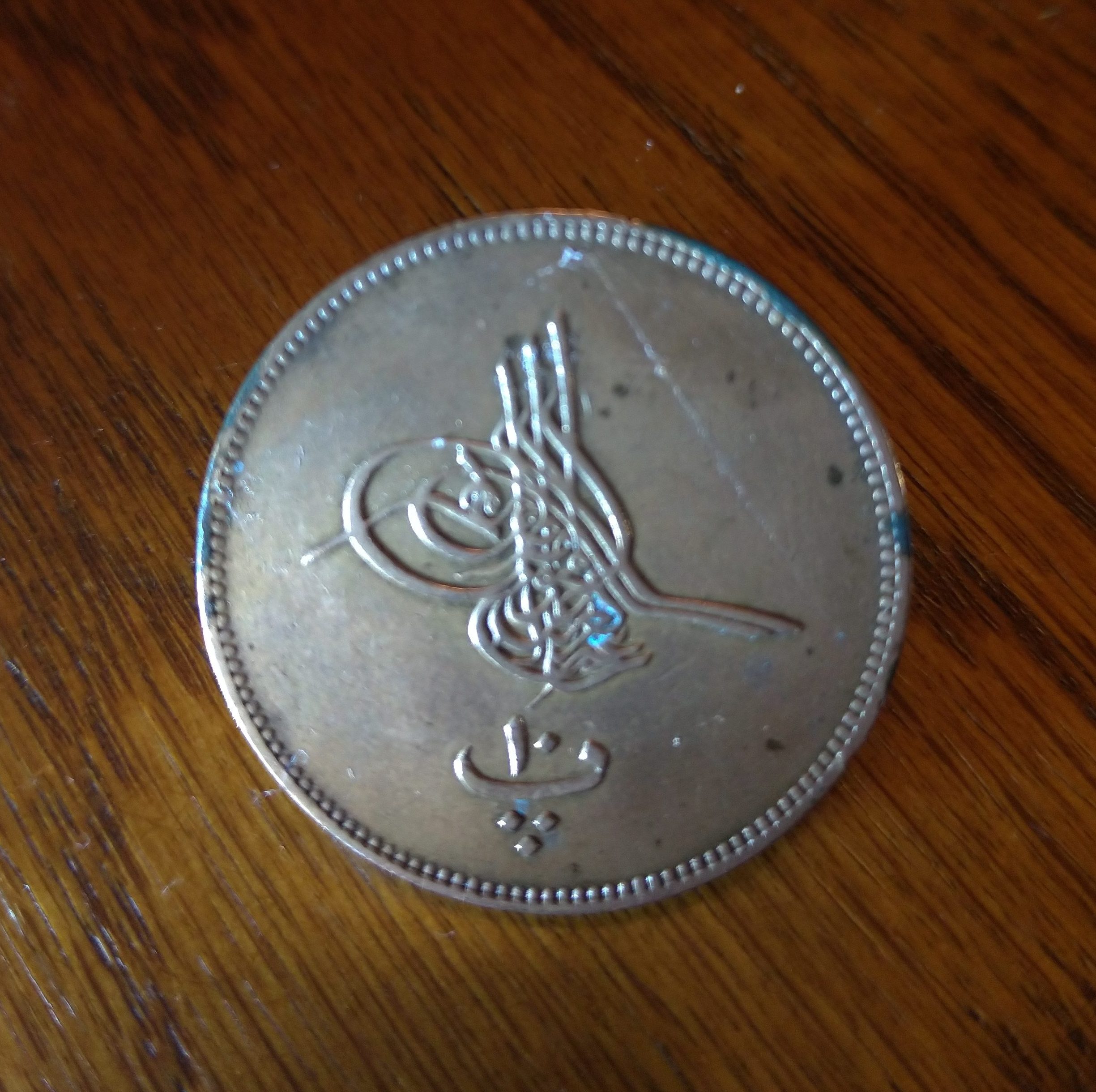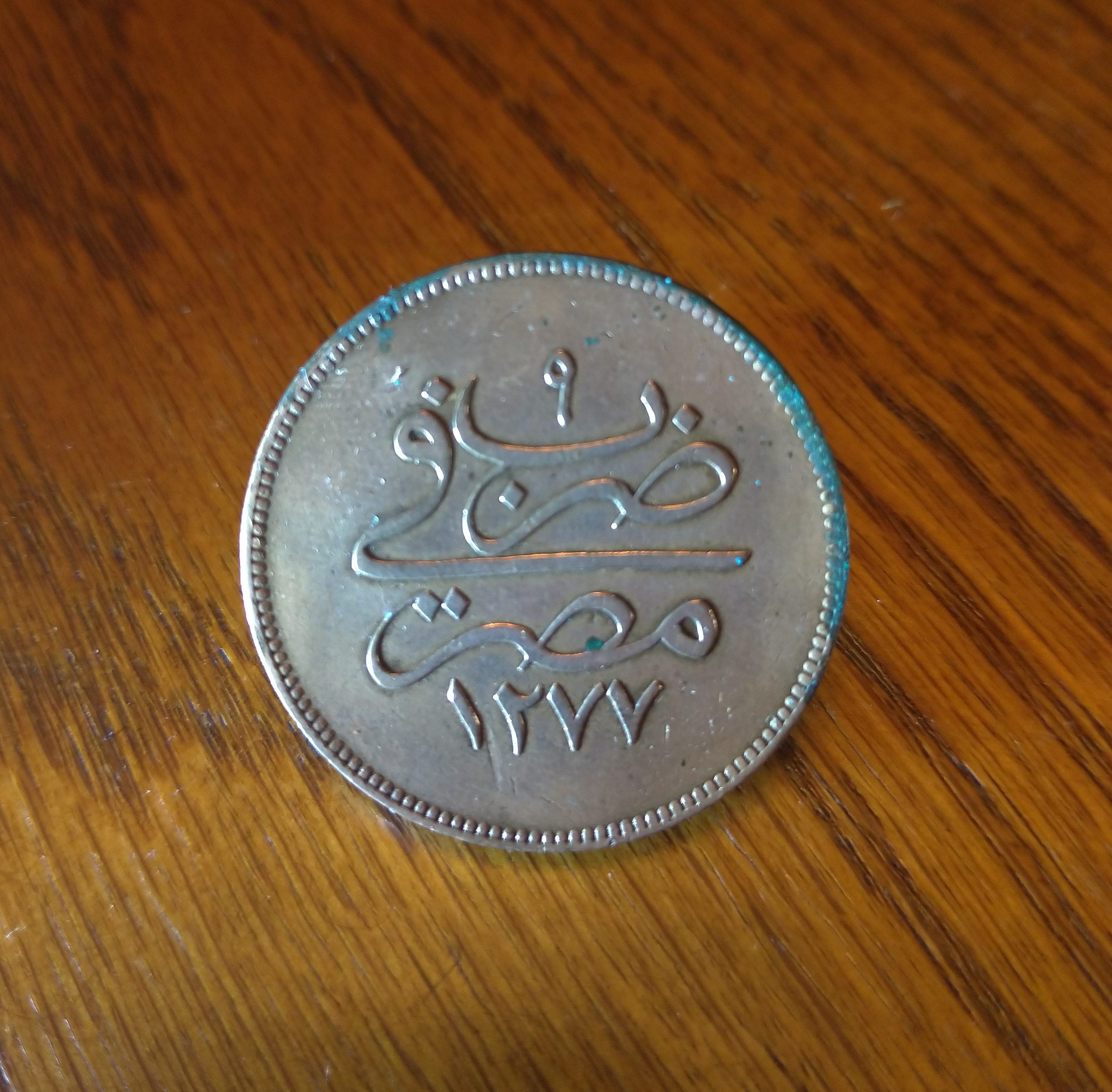Features
Country or Region: Egypt
Ruler: Abdülaziz
Islamic Year: AH 1277/9
AD Year: ~1869
Value: 10 Para
Weight: 6.07 grams
Diameter: 30 mm
Composition: Bronze
Estimated Modern Value: ~$20.00 USD

Tughra Seal
Lettering:
١٠
پ
Translation: 10 Para

Lettering:
9
ضرب
في
مصر
١٢٧٧
Translation:
Struck in Egypt
1277
Values
Worn: $2.00 USD
Average Circulated: $10.00 USD
Well Preserved: $20.00 USD
Fully Uncirculated: $50.00 USD
Additional Factors: coins with regnal year 15 can be worth more
Tughra Seal
The beautiful art of Arabic calligraphy is highly valued in Islamic culture and history. The Tughra, an elaborate example of Arabic calligraphy, was meant to be challenging to read or copy. It served as the signature or seal of the Sultan and worked to prevent forgeries that may compromise the authority of the Sultan in official documents, as well as lend authenticity to artifacts such as coins. The Tughra was originally intended to reveal the character of both the Sultan and the Ottoman State, and was created unique to each Sultan.
Originating in Turkey, the first Ottoman Sultan known to have a Tughra seal was Orhan I, who reigned as the second Ottoman ruler from 1326 to 1362. Although there is no availible image of Orphan’s Tughra, the Tughra of his successor Murad I appears below:

Tughra of Murad I
Reigned 1362-1389
Many stylistic elements of the Tughra changed over the centuries, however a few characteristics remained constant and could be considered unbreakable rules of the Tughra art. These include the “beyze” (Turkish for “egg”) which describes the large oval stroke extending on the left side of the signature. The Tughra also requires the inclusion of an “inner egg”. The two “eggs” are said to represent the two important seas controlled by the Ottoman empire: the Black Sea and the Mediterranean Sea. The three vertical lines usually constitute letters in the Sultan’s name – however the wavy curves that flow down from these lines usually does not represent any particular Arabic letters. Instead, they are often understood as representing the movement of the Ottomans from the East into the West. Among these curves is written – in tiny, difficult lettering – the name of the Sultan, his father, and various honorifics or prayers for his victory and success as a Sultan.

Tughra of Sultan Abdülaziz
Reigned 1861-1876
(pictured on coin above)
Sultan Abdülaziz
The characters of the Tughra above, written in Arabic, represent the Sultan Abdülaziz of the Ottoman Dynasty, who reigned from the 2nd of June, 1861 until his death in late spring, 1876. Although his death had been reported as suicide, there have been rumours that have since suggested his death was part of an assassination. Abdülaziz was the first Sultan to visit Western Europe in 1867. He also established the very first civil code in the Ottoman Empire.

Sultan Abdülaziz (1830-1876)
Sultan Abdülaziz, like his predecessor and brother Abdülmecid I, was an admirer of the material progress of Western Europe. He continued reforms started by the Ottoman rulers before him until around 1871, when he began to place greater emphasis on traditional Islamic values.
References:
http://webcache.googleusercontent.com/search?q=cache:http://lostislamichistory.com/ottoman-tughra-calligraphy/
Tughra, the unbearable beauty of a signature… and its customization
https://www.britannica.com/biography/Abdulaziz-Ottoman-sultan